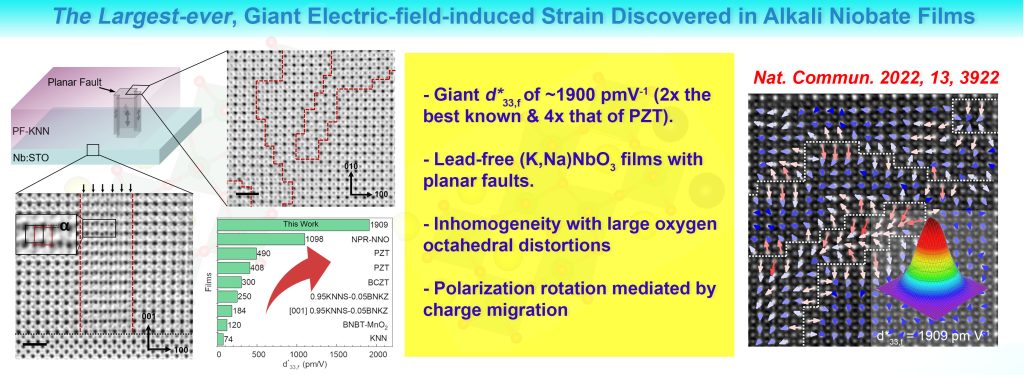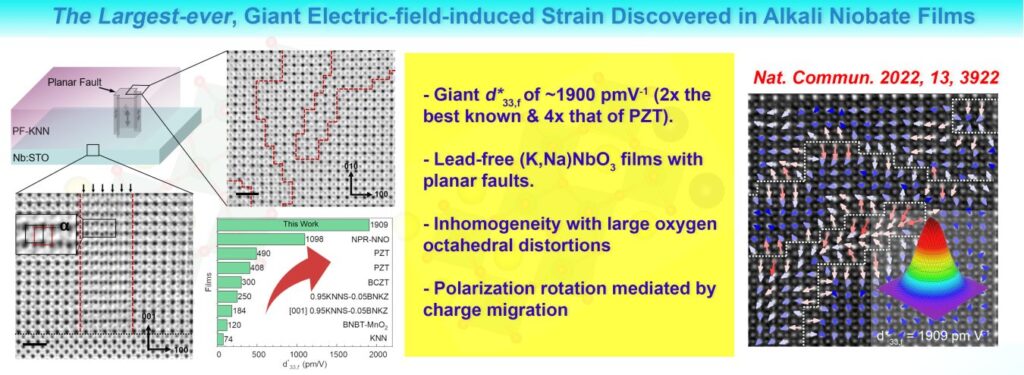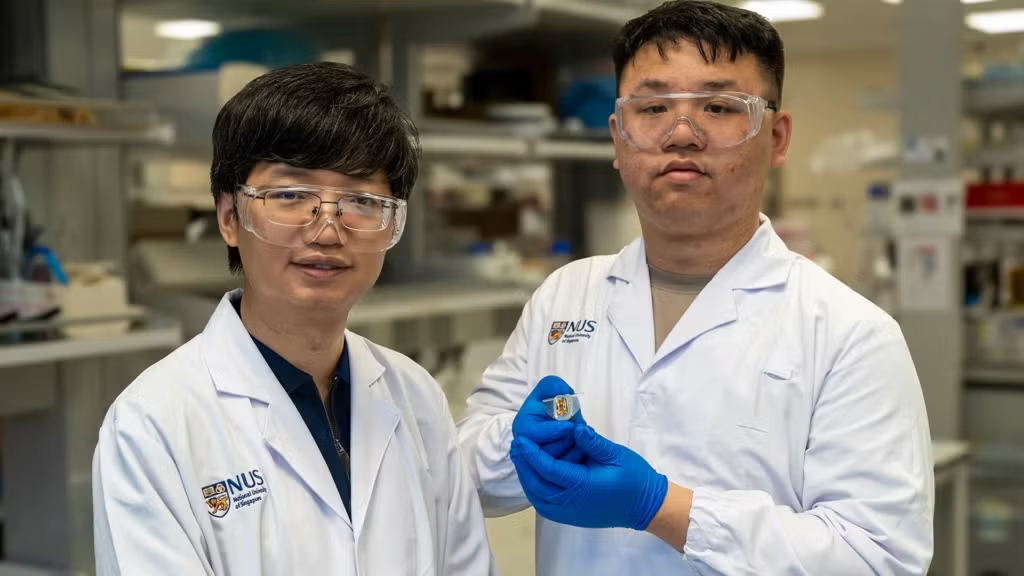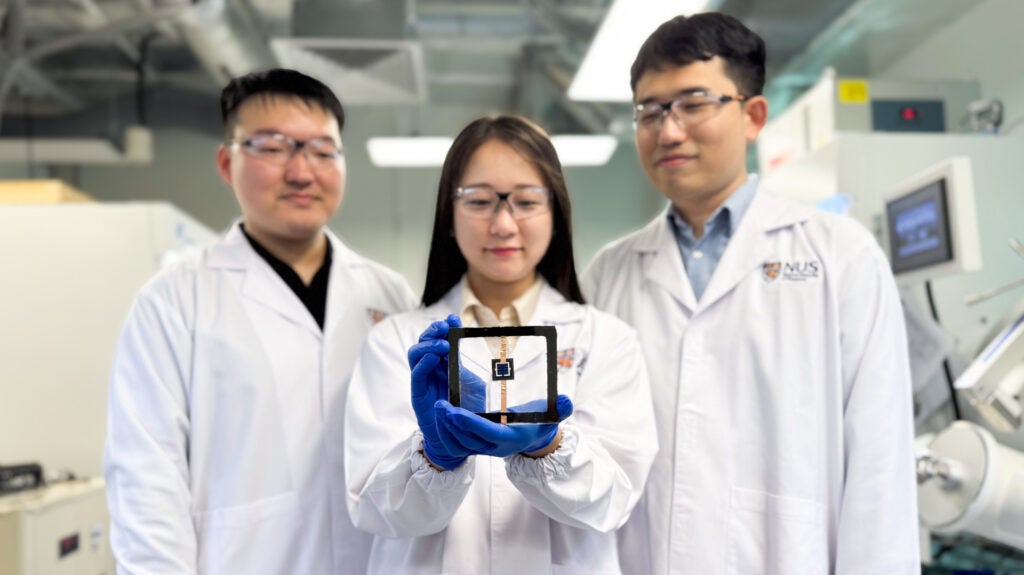
A large electromechanical response in ferroelectrics is highly desirable for developing high performance sensors and actuators. This major breakthrough comes from Professor John Wang (Department of Materials Science and Engineering) and a joint team of researchers.
Enhanced electromechanical coupling in ferroelectrics is usually obtained at morphotropic phase boundaries requiring stoichiometric control of complex compositions. Recently it was shown that giant piezoelectricity can be obtained in films with nanopillar structures. Professor John Wang and his joint team of researchers elucidate its origin in terms of atomic structure and demonstrate a different system with a greatly enhanced response. It is in nonstoichiometric potassium sodium niobate epitaxial thin films with a high density of self-assembled planar faults. A giant piezoelectric coefficient of ∼1900 picometer per volt is demonstrated at 1 kHz, which is almost double the highest ever reported effective piezoelectric response in any existing thin films. The large oxygen octahedral distortions and the coupling between the structural distortion and polarization orientation mediated by charge redistribution at the planar faults enable the giant electric-field-induced strain. Their findings demonstrate an important mechanism for realizing the unprecedentedly giant electromechanical coupling and can be extended to many other material functions by engineering lattice faults in non-stoichiometric compositions.
Read more about this research at https://www.nature.com/articles/s41467-022-31630-8





